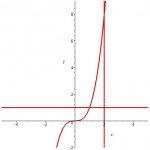Find the volume of a solid formed by revolving the region bounded by the graphs of \(\displaystyle f(x)=2\sqrt{x} , x=4\), and the x-axis about the y-axis.
That's exactly how it's worded. Can someone point me in the right direction? How to start or which method?
Thanks.
That's exactly how it's worded. Can someone point me in the right direction? How to start or which method?
Thanks.

